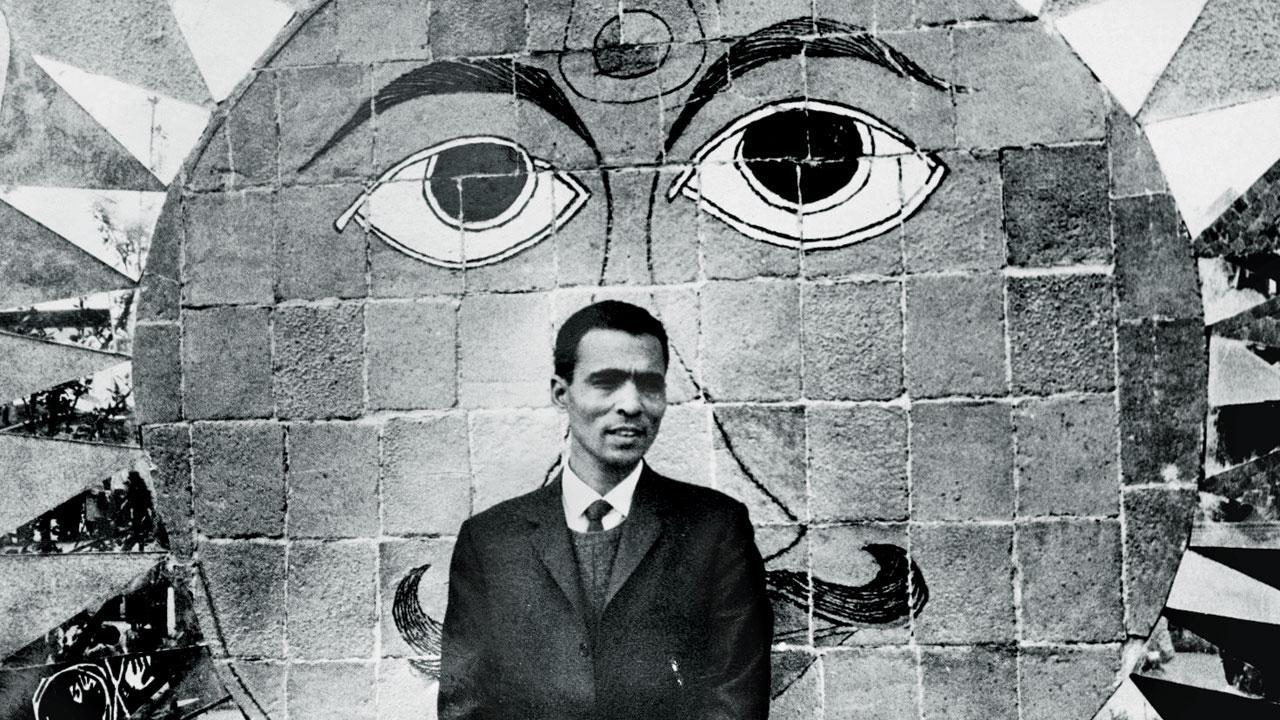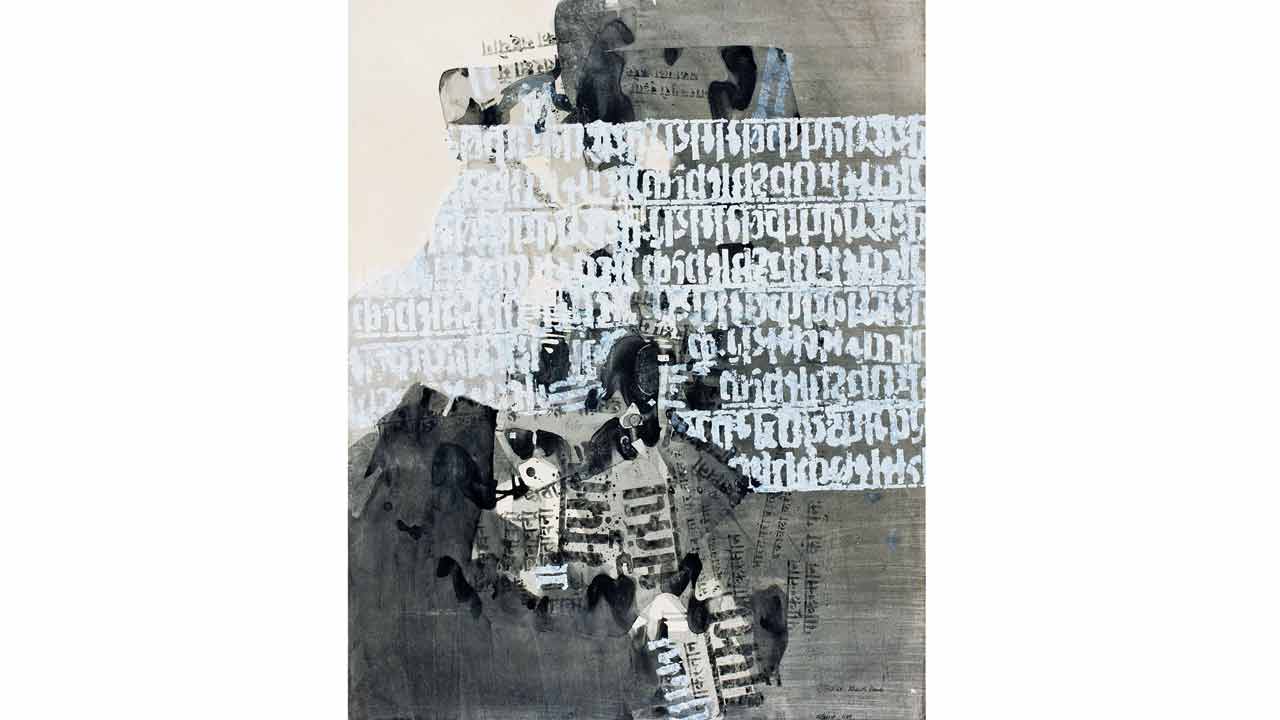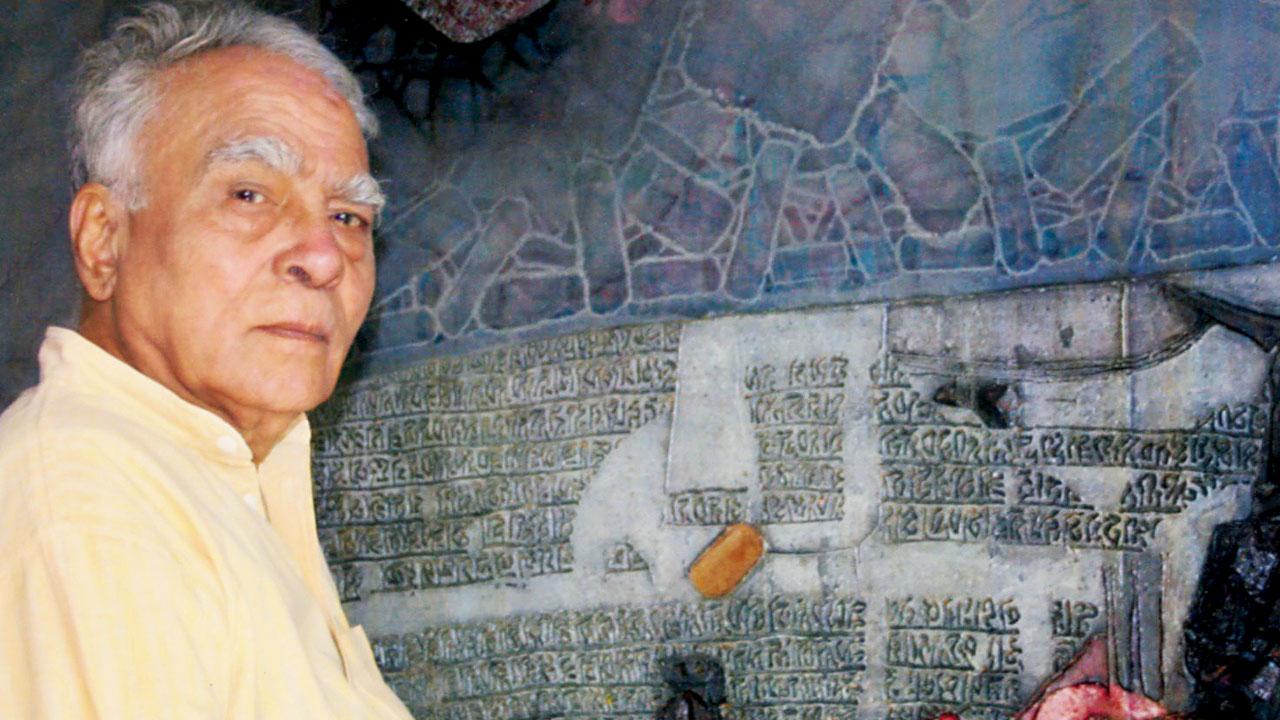Embark on a visual journey at the first retrospective exhibition of India’s early abstractionist Shanti Dave, that showcases the artist’s rarely seen early works, including his powerful graphic depictions of the 1965 Indo-Pakistan war

Shanti Dave poses in front of his mural at the India Pavilion at Expo ’67
Dag is hosting the first ever retrospective showcasing the illustrious career of 92-year-old artist Shanti Dave, spanning from 1950 till 2014, at Mumbai’s Taj Mahal Palace. This exhibition includes the Padma Shri awardee’s rarely seen early figurative works, and unveils for the first time the artist’s stark black-and-white graphic watercolours on the 1965 Indo-Pakistan War, a body of work that is political and shows him as a humanitarian.
ADVERTISEMENT

Shaheedon ke Shabd, watercolour and ink on paper, is a part of the artist’s 1965 Indo-Pak War Series
Fondly known as Shanti bhai in the art circle, Dave is regarded as a pioneer of abstract expressionism in India. Titled, Shanti Dave: Neither Earth, Nor Sky, the exhibition and an accompanying volume curated by Jesal Thacker delve into his unique visual language and exploration of the word or akshara, the theory of sound, and the aesthetics of bhava — emotion arising from form and colour — instilling each composition with a rasa, as well as the incorporation of textures using gravel, wax and sand that evoke earthy topographies. “For Shanti Dave, creativity is a persistent exploration of the word or akshara — a term defined in the Natyashastra, as a stroke in musical notes — which he perceives as the source of all creation,” explains Thacker.

Untitled (self-portrait), oil on Masonite board (1954)
Ashish Anand, CEO and MD, DAG, believes that this exhibition is a great opportunity to learn about the practice of a seminal modernist whose artworks are exemplary but has been overlooked by the art world in a rush. He elaborates, “Through this exhibition, one can expect an introduction to various strands of modernism in Indian art as the trajectory of Shanti bhai’s career almost parallels the journey of modernism itself in Indian art.”
Although an avid collector of Dave’s works, Anand informs that it was only a few years ago that he was able to acquire a sizeable part of his estate to justify an exhibition such as this one — a first-ever retrospective on the artist. Speaking in awe of the artist, Anand shares, “His work is as mysterious and intriguing as the man behind those works. Shanti bhai doesn’t talk much about his art, leaving the interpretation to art writers and scholars who find his work as mysterious as it is intriguing. One of the fastest selling artists of the 1960s, he prefers his own space and does not fraternise much, which perhaps explains why he has remained out of the limelight in the latter part of his career.” He adds that the insights in the accompanying book will prove useful in establishing the legacy of
an artist who should have been served this honour much earlier.

Shanti Dave
Not to be missed at the exhibition is Dave’s series of monotonal works titled Yudh ki Chaye [the shadows of war]. Deeply agonised by war, the poster-like paintings depict resistance, destruction and political antagonism. Bereft of colour, the artist creates the series by masterfully manipulating the texture and tone of watercolour, ink and paper. Speaking about the use of monotone in this series, he reasons, “Isn’t all war a death of humanity, no matter which country wins? How can any artist celebrate this victory?”
On: December 18 to January 22; 11 am to 7 pm (Sundays closed)
At: DAG 2, The Taj Mahal Palace, Apollo Bunder, Colaba.
 Subscribe today by clicking the link and stay updated with the latest news!" Click here!
Subscribe today by clicking the link and stay updated with the latest news!" Click here!







